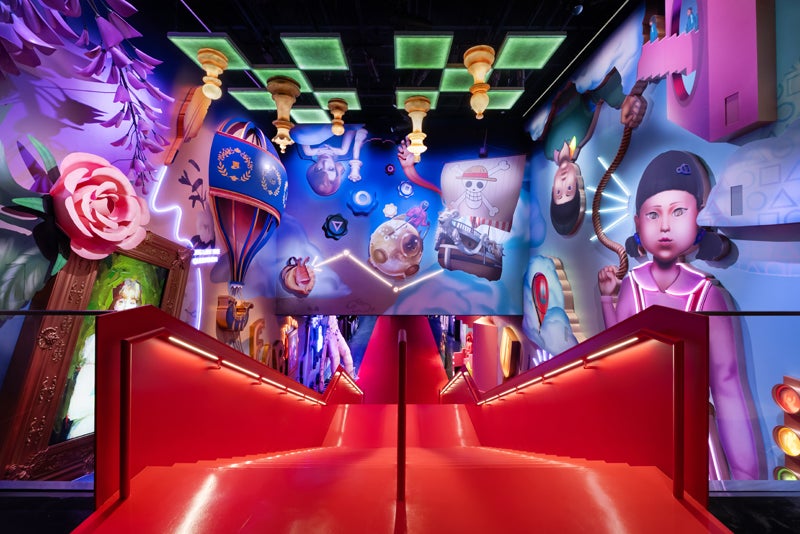Thankfully, not every toy fad turns kids into knife-wielding, classmate-beating, larceny-committing fiends. Pokemon does, as anyone who has read a newspaper over the last two months can attest. The much-heralded Japanese import from Nintendo began fully living up to its hype in November, when the release of Pokemon the First Movie and a corresponding Burger King promotion sent sales of licensed merchandise – and alleged incidents of criminal behavior – soaring.
“We have not seen anything like this before,” says Rich Maryyanek, senior vp-marketing for Golden Books Family Entertainment’s publishing division, which gained the bulk of the Pokemon book license last year in a three-year deal with official licensor Leisure Concepts (a division of New York City-based 4Kids Entertainment).
Golden Books released 17 activity books in August that had 30 million copies in print by early December. “This really is the first time we’ve seen a property driven by a combination of media, not just a blockbuster movie,” says Maryyanek, noting the popularity of Pokemon videogames, TV programs, and trading cards, all of which built up the buzz before the movie release opened the floodgates.
Toy analysts expected Pokemon (an abbreviation of “pocket monster”) to be the best-selling toy for the ’99 holidays. After all, the property boasts 151 characters and, as the tagline explains, kids “Gotta catch `em all.” But by all accounts the property has exceeded even the loftiest expectations.
Film distributor Warner Bros. ran out of the special-edition trading cards it planned to give away with theater tickets when the movie grossed $10 million in its first day. The Burbank-based studio set up a mail-in program and a toll-free line for moviegoers left empty-handed at the box office.
Miami-based Burger King knew it had a winner on its hands, and ran a Kids Meal effort offering 57 different toys in 56 days – not to mention six gold-plated trading cards. Equity Promotions, Los Angeles, supplied the products and created a related Web site.
But demand exceeded BK’s reported supply of 100 million toys – the program “shattered every sales record ever set,” according to a BK release – and after running a full-page apology in USA Today, the chain rejiggered TV spots to announce trading nights in restaurants.
PIKACHU’S SHELF LIFE
KFC is living proof that you can jump on a fad too early. Its fourth-quarter ’98 Pokemon promo was a bust, and you can now buy a set of four “KFC Pokemon Bean Bags” for as little as $20 through online auctions. (The company would not discuss what it did, or plans to do, with its excess inventory.) The question now is, when will it be too late?
“Retailers are saying this is the real thing. But it certainly shows the characteristics of a fad,” which generally has a lifespan of 18 to 24 months, says entertainment fad guru Ira Mayer, president of New York City-based EPM Communications. “Some fads do turn out to have long lives, although not at their peak level. The trick is not being left holding the bag at that peak.”
“What [Nintendo and Leisure Concepts] have planned for next year makes us feel it will be strong for awhile,” says Kathryn Maciel, vp-marketing for Toy Biz, Inc., New York City, which hopes to add to the collecting frenzy this month with the roll-out of 150 Pokemon Collector Marbles, and later this year will ship magnets and kites. The plans Maciel refers to include the release of the second movie next summer and the debut of 100 new “gotta catch `em all” characters to add to the current 151-strong Pokemon stable.
“If you look at the trend in Japan, it’s been around for a long time there (four years and counting) and it’s still going incredibly strong,” says Maryyanek. The marketer praises Nintendo and Leisure Concepts for gearing the TV series and some product to younger kids who can’t yet comprehend the games or collect-and-trade concept of the cards, but who will hopefully evolve into the next wave of rabid buyers.
“I believe it will have legs for much longer,” says John Lebbad, director of event marketing and sales promotion for Sears, Roebuck & Co., Hoffman Estates, IL. The retailer acquired some exclusive apparel licenses and set up 524-square-foot PokeMart merchandise displays in all 855 full-line stores to coincide with the movie release. “It’s been hotter than anybody could have imagined,” Lebbad says.
A four-week promotion offered T-shirts of all 151 characters for $7.99 with the purchase of $25 in Sears’ kids departments (and $12.99 separately). TV spots, Sunday circulars, and P-O-P supported. Wunderman Cato Johnson, Chicago, developed the promo. Young & Rubicam, Chicago, handled advertising.
“We always have a thorough understanding of a property and its marketing plan before we develop our own plans,” says Lebbad, adding that Sears will consider additional promos connected to major events within the Pokemon universe. “The trick is keeping them fresh and relevant to the consumer.”
Marketers are concerned about the scattered mayhem the phenomenon has caused, but don’t find anything inherent in the property to turn some kids into little monsters. “There is some redeeming value to the concept,” says Lebbad, who has his own nine-year-old Poke-phile at home.
“It’s not violent,” adds Maryyanek. “Characters faint, they don’t die.”
Wonder if the same can be said for the Pokemon fad.



